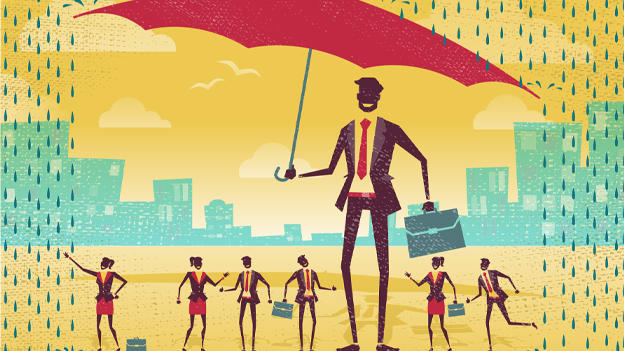Leading through COVID-19: A year of two halves

At the time of writing, there have been more than 220,000 confirmed cases of COVID-19 across 162 countries and territories around the world, with many countries and regions: EU, Australia, Singapore, Malaysia, Brunei, and more declaring extensive travel restrictions or complete lockdown in a bid to curb the spread of the virus. The ongoing outbreak has been declared a global pandemic by the World Health Organization on 11 March 2020, which resulted in governments and businesses taking drastic measures to manage the impact of the virus.
Across the industries, employers are implementing strategies on employee safety, talent/leadership development, performance management, compensation and rewards, corporate affairs, financial modeling, and business continuity, although at varying degrees. Some of the most common measures implemented that we have observed include:
- Employee safety: Ubiquitously, businesses are prioritizing the physical and mental health of their employees and families. In a recent Korn Ferry survey of 300 HR leaders in China, 90 percent of surveyed organizations said that they are providing their employees with protective equipment, with more than one third of organizations (35 percent) said that they are also providing employees with psychological counselling services in this difficult time. Many organizations have also restricted non-essential business travels for employees and implemented regular office cleaning schedules.
- Compensation and rewards: Some industries – like travel, retail and hospitality – are undoubtedly taking a bigger hit than others. Already, top management and CEOs at some airlines—an industry crushed so far—have announced that they are cutting their own pay by 10 percent to 20 percent. In China, Trip.com, the largest online travel service, the CEO and Chairman have cut their salary to zero. In Singapore, many big organizations like Temasek, CapitaLand, have announced that they are also freezing salaries and pay increment for senior management level, in order to cope with the challenging situation.
- Business continuity: Organizations must deal with two equally important factors—namely, keeping employees and their families safe, and business continuity while sustaining operations as best as possible. Most businesses across the world have either begun or enhanced their telecommuting policy, split teams and flexible working arrangements with their employees. Across many functions within the organization, especially in customer-facing industries, digitalization efforts are also getting a boost, in order to minimize physical transactions and enhance efficiency beyond the outbreak.
At this stage of the COVID-19 outbreak, many organizations are understandably focusing on short-term measures to deal with the immediate impact of the virus. The same survey of HR business leaders finds that HR departments across all industries and company sizes have been forced to adjust their approach and focus more on short-term tactical tasks that deal with the virus outbreak, with long-term strategic work taking a back seat.
But eventually, the virus will subside. And when it does, organizations need to be ready.
In fact, some of the biggest operation and leadership challenges will come after the outbreak. While some businesses have had experienced handling and mitigating against risk in the face of a crisis, many others might be sacrificing long-term growth for reactive and rash-decision making. Over the next 12 months or more, business leaders should be looking at their operations in two phases - the first half will be spent dealing with safety, containment, continuity, and contingency planning and the second half to leverage the pent-up demand in the global economy to grow market share: incentives, recruitment, and leadership.
Here’s our advice on how agile and proactive organizations should be thinking about managing their talent over the next 12 critical months.
Calm and prudent leadership to guide the first half of the crisis
The COVID-19 outbreak will test not only the leadership acumen of senior management, but also the ability of organizations to operate through ambiguity. Organizations need to show empathy and engage with their employees and customers with transparency and clarity. Although the two halves of 2020 will look very different, it is impossible to do well in any cycle without thinking about and planning for the next one.
As such, communicative, action-oriented leadership is necessary during this period. Singapore government’s approach to the crisis has been lauded for these exact characteristic – strong leadership, clear reinforcement of protocols and procedures, as well as transparency in sharing critical information at timely junctures are all valuable lessons that every country and businesses can learn from. In addition, leading by example will be critical: people need to know that their business leader cares for them and understands what they are going through. They must lead from the front, role modeling the values and behaviors they expect from the team.
While keeping a close eye on the developments of the outbreak, business leaders should use this time to strategize and plan for the second half. For example, one important tool that they can employ is through the structure of their compensation and rewards system. Our advice would be to move toward two separate performance cycles for 2020. The first should emphasise stability and preservation in the short term, and then once conditions return closer to normal, a second cycle should focus on driving the longer-term strategic agenda. Some short-, medium- and long-term measures that businesses can consider are:
- evaluating existing non-financial rewards that can be expanded to keep up engagement/morale;
- developing retention plans for key talent;
- diagnosing the different performers that require different types incentives (high potentials);
- adjusting individual performance incentives as conditions normalize;
- enhancing incentive designs based on learnings during the outbreak.
Agile and decisive leaders to shine in the second half of the crisis
Organizations that manage to mitigate the impact of the virus while engaging with their employees in the first half of 2020 will be in an advantageous position to recover and succeed in the second half of 2020. Three key areas will be critical to growing and gaining market share: incentives, recruitment, and leadership.
There’s nothing like a crisis or a complex problem to accelerate learning, and the second half of 2020 is where great business leaders will stand out amongst the rest by putting these learnings into application quickly and smoothly. They need to be agile, nimble and decisive when opportunities present themselves. When the virus and it’s business implications has run its course, a seamless switch to a pacesetting, “run fast and keep up” style, or a more directive “here is what we need to do to make up for lost time” leadership style may be in order.
During the outbreak, many organizations have opted to halt recruitment, the effects of which will most likely be felt when markets recover. As such, HR leaders will need to monitor the situation closely and plan to resume or revisit their talent management strategy BEFORE the rebound because the best talent will be well positioned for many new opportunities. For some organizations, this might represent an opportunity to attract top talent from the market, building on how well they have been managing the situation in the first half of 2020.
As conditions normalize, they can also start to consider more taking more long-term actions that will help them prepare for uncertain times in the future:
- refocusing investment strategy on main business goals and growth opportunities;
- involving employees in developing/updating crises response plans, and then test them intermittently;
- comparing data on engagement levels before, during, and after the crisis, and create strategies to address times of decline;
- reviewing your employer branding as new talent will be attracted to a business that managed well through the health and economic effects.
While the impact of the COVID-19 outbreak is expected to be high, markets and business conditions will gradually recover. For organizations to have long-term and sustainable successes in a volatile business landscape, they must learn to operate in ambiguity and constant disruption. Building a culture that not only tolerates this climate but also thrives in it will separate the winners from the losers. For the current outbreak, while leaders focus on dealing with the immediate impact of the crisis, they should also keep a long-term view on any measures being implemented to ensure their organisation’ success. For HR leaders, this means ensuring that whatever adjustment they make to their approaches and policies now, does not stifle their organisations’ growth in the future. Organizations that come out of a crisis stronger typically have leaders who drive change around how they operate, how they engage employees, and how nimble and flexible they are in focusing, engaging, rewarding, and retaining their people.
















